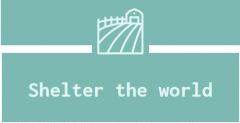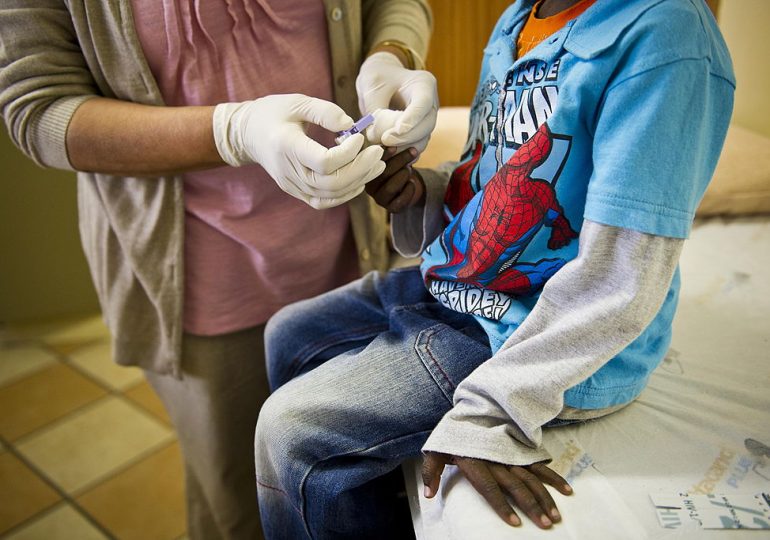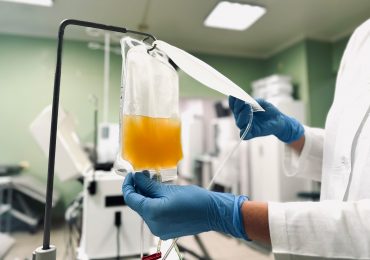On his first day back in office, President Trump ordered a sweeping 90-day spending freeze on almost all U.S. foreign aid, initially making exceptions only for military funding to Egypt and Israel and emergency food aid. The “stop-work order” in the directive had immediate consequences for people’s health and wellbeing.
[time-brightcove not-tgx=”true”]
HIV clinics around the world funded by the U.S. President’s Emergency Plan for AIDS Relief (PEPFAR), a highly successful aid program launched by George W. Bush that has saved more than 25 million lives, had to cancel appointments and turn patients away. Two-thirds of the staff of the President’s Malaria Initiative—the world’s largest funder of malaria control programs, also founded by George W. Bush—have been fired. Humanitarian assistance programs in Gaza, Sudan, and Syria that provide services like clean water and cholera treatment were halted. Oxygen supplies are no longer reaching health facilities in some low-income countries.
Funding was frozen for critical disease control programs that prevent and treat a range of deadly infectious diseases, including malaria, Marburg virus, mpox, and tuberculosis. In Zambia, distribution of life-saving medical supplies to treat childhood diarrhea and bleeding in pregnant women came to a stop. At one U.S.-funded hospital in the Mae La refugee camp on the Thai-Myanmar border, 60 patients were sent home. “It feels like one easy decision by the U.S. president is quietly killing so many lives,” one of these patients, who has tuberculosis, told the New York Times. He was sent home with only one week’s supply of medicine and has no other way to get treatment when the supply runs out.
Read More: I’m a Veteran. Trump’s Trans Military Ban Betrays Our Troops
Last week, the distressing reports of people being denied their HIV medicines led Secretary of State Marco Rubio, who oversees U.S. aid, to issue an emergency temporary waiver that—in theory, at least—allowed U.S. aid to be used to pay for HIV antiretroviral medications. But there was a huge amount of uncertainty about what this waiver covered. Colleagues in low- and middle-income countries who provide HIV services funded by PEPFAR say that they were instructed to stop work and that the language of Secretary Rubio’s waiver was too vague to have any meaningful impact. Facing pressure to clarify the confusion, on Feb. 1, 2025, the Department of State issued a memo saying that the waiver covers HIV treatment as well as services for preventing transmission of HIV from mother to children—but not other kinds of preventive services.
While these waivers are welcome, they are narrow in scope and temporary, and they do not do enough to overcome the confusion, disruption, and paralysis in U.S.-funded health programs worldwide.
It is true that many low- and middle-income countries are working towards increasing their own domestic spending on health so that they become less aid dependent, and that aid donors, including the U.S., have signaled their support for such a transition out of aid. PEPFAR, for example, in its latest 5-year strategy, commits to helping countries mobilize domestic financing and gradually increase country ownership and management of their national HIV control programs. But the key word here is “gradually.” Sudden shocks, like freezing aid overnight, do not accelerate the transition process; they blow it up and can cause disease resurgence.
Read More: A Study Retracted 15 Years Ago Continues to Threaten Childhood Vaccines
There is now a wealth of research evidence and real-world experience on how best low- and middle-income countries can transition out of aid and take over the funding of their disease control programs in a way that is careful, safe, well-planned, and unhurried. The process typically takes around a decade or more, during which countries spend an increasing amount of their own domestic resources on these programs, year on year, so that they don’t face a sudden spending cliff when the donor exits.
Managing donor exits well is critical in order to maintain the remarkable gains that have been made by countries, with the support of aid donors, in controlling deadly infectious diseases over the last few decades. These gains are fragile; in places where there is still ongoing transmission of an infectious disease, disease control programs must be maintained and never interrupted. The reason that transition is done slowly and carefully is that countries need adequate time to get their health delivery systems and their finances strong enough to fully take over these programs. Sudden, chaotic withdrawal of aid is the worst kind of interruption—one that puts lives on the line.
To see what happens when aid donors withdraw their support precipitously, we only need to look at what happened in Romania when two donors exited simultaneously. In 2010, the Global Fund for AIDS, Tuberculosis and Malaria—the world’s largest multilateral donor to HIV programs—rapidly departed from Romania, with no plan put in place for the Romanian government to fund or take over HIV prevention services. Romania was a so-called “first wave” transition country; it was in the group of countries that first lost support from the Global Fund. As we noted in our study on donor transitions from HIV services, withdrawal of the Global Fund from Romania “left a significant gap in financing for HIV prevention activities that was not covered by the government.” The Global Fund’s exit was compounded by the simultaneous withdrawal of funding from the United Nations Office on Drugs and Crime, an aid donor that had previously supported HIV-prevention efforts among people who inject drugs, such as needle and syringe exchange programs.
The double whammy of two donors withdrawing their aid was catastrophic. HIV prevention and treatment services in Romania for vulnerable populations—sex workers, men who have sex with men, and people who inject drugs—collapsed, and the HIV prevalence shot up quickly. For example, among people who inject drugs, HIV prevalence rose from 1.1% in 2009 to 6.9% three years later; by 2013, 53% of this population had HIV.
Read More: Why We Need to Remember the Physical Effects of Polio
We can also look to see what happens when funding for malaria control programs is halted in places where there is still ongoing transmission. In a study we published in 2012, we looked back through history to identify all episodes of malaria resurgence. We found 75 resurgence events in 61 countries that occurred from the 1930s through the 2000s. The most important finding of our study was that almost all of the resurgence events—68 out of 75—were due at least in part to weakening of the malaria control program. The most common reason for this weakening was a disruption in funding.
The message is clear. Trump’s sudden disruption to funding disease control programs worldwide will wreak havoc. When people stop taking HIV medicines, they don’t just become sick; their HIV viral load also rises, which can drive disease transmission. The New York Times reports that in Uganda, aid workers estimate that about “40 newborns contracted HIV per day when the U.S. stopped funding for antiretroviral drugs.” Sudden treatment interruptions can also cause the rise of drug-resistant HIV strains. If a patient develops a resistant strain, then they will not be able to go back on the same HIV drugs as before. They will need different, more costly second-line medicines.
Make no mistake: freezing U.S. health aid is the opposite of a well-managed, careful transition out of aid. It puts people at risk of illness and death and risks diseases raging out of control.
Leave a comment





